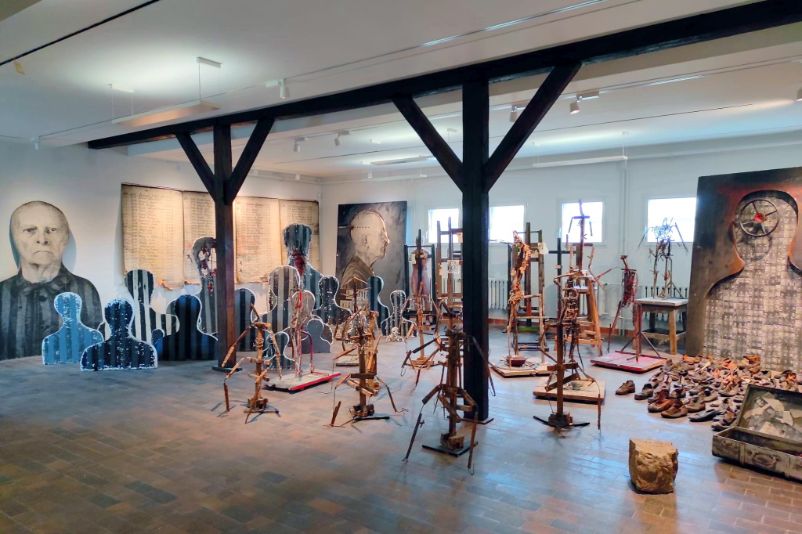
Exhibition structure
The exhibition features works created in the concentration camp by those interned as well as pieces created retrospectively by survivors. These are complemented by works of contemporary artists who investigate the possibilities of coming to terms with the National Socialist crimes.
- The exhibition is divided into five sections:
- Art from Concentration Camps
- After Liberation
- Reminiscences (Józef Szajna)
- Contemporary attempts
- Art in public space
Concentration camp art
The first room of the exhibition shows works (landscapes, still lifes) created in Buchenwald's subcamps. Spatially juxtaposed against them are drawings and sketches created by prisoners in the main camp on the Ettersberg, arranged thematically: "The place", "Everyday life", "Portrait", "Landscape".
Many drawings by Paul Goyard are exhibited. Sheltered through the allocation to particular labor detachments, Paul Goyard was able to draw his perceptions of everyday life in the camp on scrap paper. These sketches were used as reference material for the creation of a diorama, that he made in Paris after liberation with the help of a friend and former Buchenwald inmate, José Fosty.

"Reminiscences"
The large spatial installation "Reminiscences" created by the Polish theater director Józef Szajna is a core work in the exhibition. It is dedicated to the memory of the professors of the Krakow Academy of Arts who were deported to Auschwitz and murdered. The work, which was shown at the Venice Biennale in 1970, is one of the most significant artistic confrontations with the Nazi rupture of civilization.
Art in the public space
Sculptures and monument designs are displayed in the now enclosed wing of the former disinfection chambers: Works in stone and bronze from the 1950s made for memorials in Bad Salzungen, Ravensbrück, and Buchenwald; studies by Erich Wurzer, Will Lammert, Theo Balden, and Fritz Cremer; and (unrealized) designs for the Buchenwald memorial from the 1980s.
A free brochure with the biographies of the artists in the exhibition is available to visitors.

